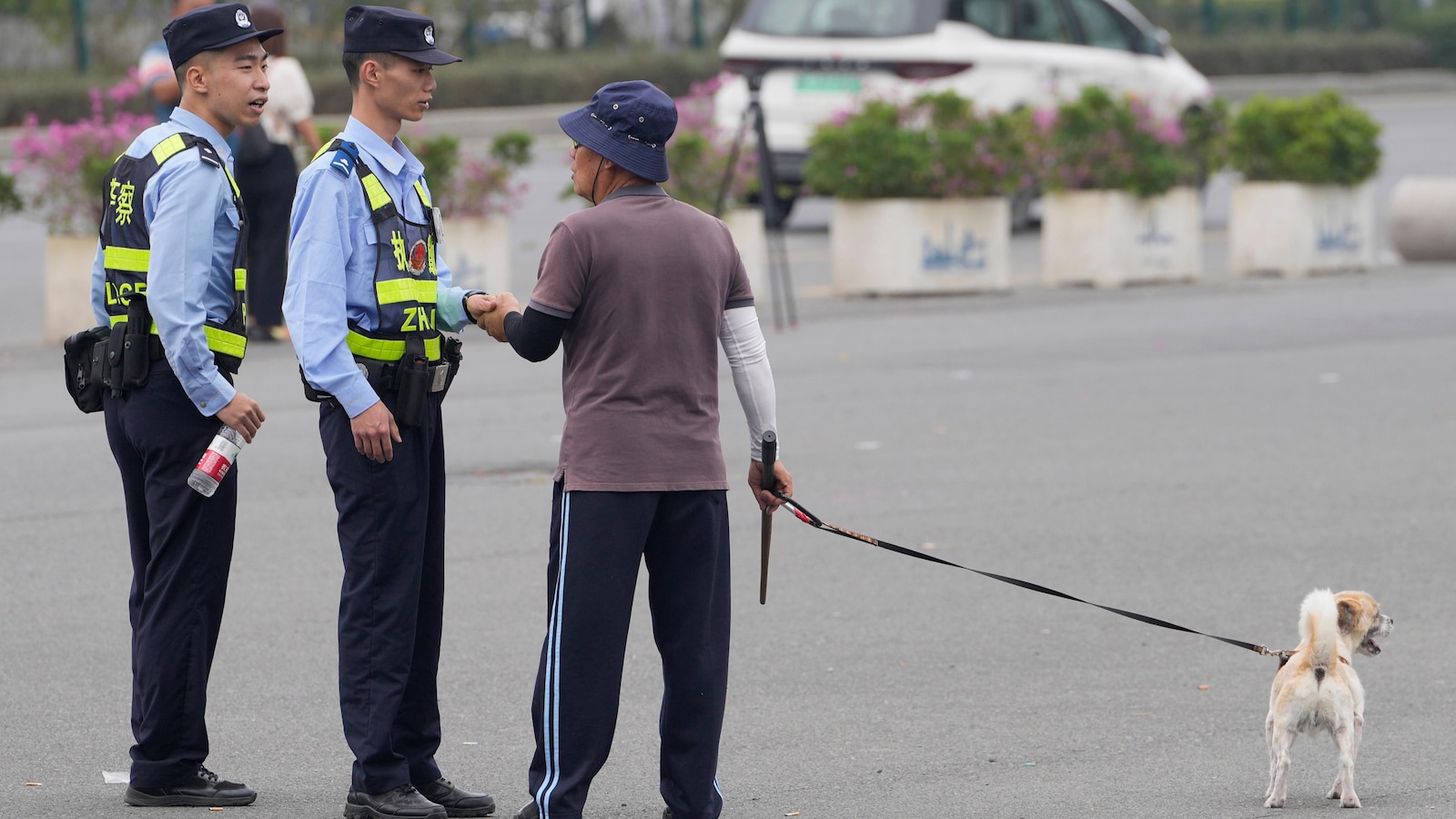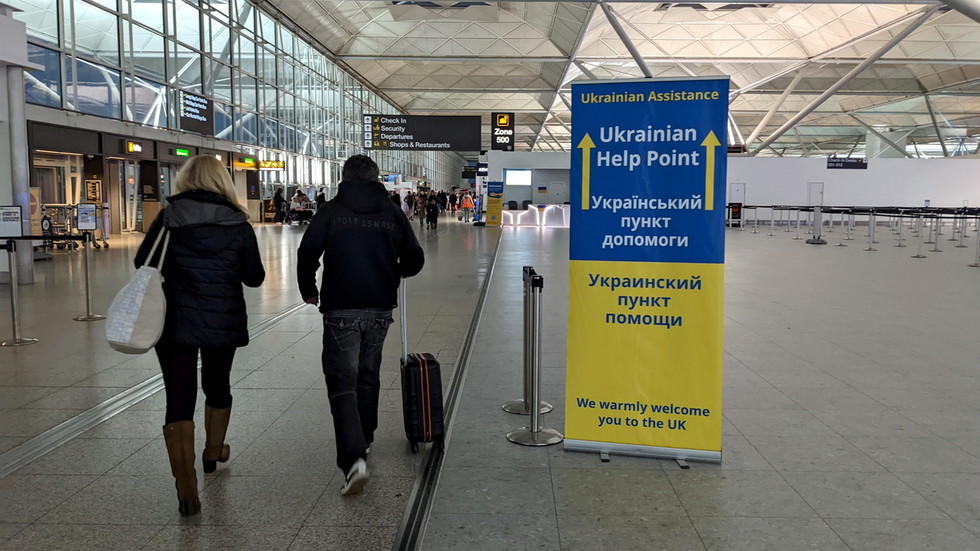On Friday, armed and masked United States Immigration and Customs Enforcement (ICE) agents dressed in full tactical gear launched raids on workplaces and warehouses across downtown Los Angeles, handcuffing dozens of people suspected of living and working in the US without proper documentation and bundling them into unmarked armoured cars.
The raids brought crowds of Angelenos onto the street to protest the arrests, with some demonstrators trying to use their bodies to block the armoured cars from leaving with the detainees. Local media reported that uniformed officers responded by throwing tear gas canisters and flash bang grenades into the crowd, leading to sporadic violent clashes between police and protesters.
Four nights on, Angelenos are living a tale of two cities. In one, thousands of peaceful demonstrators including activists, advocates and union members have repeatedly come together to protest the escalating raids on the city’s undocumented workers through civil disobedience, with crowds shutting down highways and gathering outside a federal detention centre Monday to call for the people held inside to be released.
In the other, pieced together from images widely shared across social media of burning cars, anti-ICE graffiti and armoured riot police launching tear gas at masked protesters, Los Angeles is a city on the brink of obliteration. Describing the city as having fallen to “violent, insurrectionist mobs”, US President Donald Trump deployed more than 4,000 members of the state’s National Guard – against the wishes of Democratic Governor Gavin Newsom – and ordered the Pentagon to mobilise 700 US Marines to “support” federal immigration agents as they intensify their operations.
It is the image of a burning city that may prepare the ground for the Trump administration’s intensifying crackdown on undocumented migrants across the US – and the kind of armed force that may be brought to bear to see it through.
Changing targets
Stephanie Schwartz, assistant professor in international relations at the London School of Economics and Political Science, said that Friday’s raids had already been orchestrated to send a very clear message.
“Why employ heavily armed agents in what amounts to a domestic raid in a workplace where you would not expect there to be armed resistance? The answer is the terror is the point, as is broadcasting it,” she said.
Friday’s raids – and a similar operation in San Diego a week earlier – have followed a significant shift in ICE’s operations. Although the agency has previously said it has been prioritising the detention of undocumented immigrants suspected of having committed criminal activities or belonging to criminal groups, ICE has over the past week launched a series of raids on softer targets.
Send in the Marines? Trump deploys troops to LA protests
To display this content from YouTube, you must enable advertisement tracking and audience measurement.
One of your browser extensions seems to be blocking the video player from loading. To watch this content, you may need to disable it on this site.

43:10
In their raids on Los Angeles’ fashion district, federal immigration agents set their sights on businesses suspected of employing undocumented workers. In sprawling Los Angeles, where one in three people are believed to have been born overseas and one in ten may lack legal residency status, it’s not hard to see why the operation met resistance.
On the same day as the Los Angeles raids, plainclothes ICE agents seized two men in a New York courthouse while they were leaving mandatory immigration hearings – a growing pattern of arrests that immigration lawyers warn could dissuade undocumented migrants from trying to address their residence status through the country’s legal system.
The rise in ICE raids on workplaces and immigration courts seems to have been triggered by a tense meeting between White House deputy chief of staff Stephen Miller and the agency’s leadership late in May, where Miller – the chief architect of Trump’s mass deportations policy – reportedly demanded that ICE agents ramp up their number of arrests to 3,000 people every day.
To reach this figure, which would triple the number of people detained daily by the agency, Miller called on ICE to step up raids on workplaces suspected to be employing undocumented workers.
“‘Why aren’t you at Home Depot? Why aren’t you at 7-Eleven?'” a senior ICE official reported a furious Miller as saying, referring to a major US retailer and a convenience store chain.
Increasing ICE's ability to carry out Trump's agenda of mass deportations is also at the heart of the president's "Big Beautiful Bill", which in its current form would allocate more than $150 billion in additional resources to immigration agencies. While a fraction of this would go to the immigration courts, the bulk is bookmarked for border wall construction, building new detention centres capable of holding more than 125,000 people and hiring 10,000 more ICE officers over the next five years.
Internal enemies
Schwartz said that the high-profile nature of Friday’s raids served several priorities pushed by the Trump administration.
“One is to scare immigrants – to escalate the message that not only are immigrants not welcome, but that anyone who appears to be an immigrant could face violence from the state even as they’re just going about their daily business,” she said. “Second, the type of force used further paints immigrants as dangerous. Villainising immigrants as ‘invaders’ fuelling ‘insurrection’ is a central pillar of the government’s legal justification for the immigration crackdown.”
Trump has in part justified his policy of mass deportations by invoking the 1798 Alien Enemies Act – its first use in peacetime – under the argument that members of the Venezuelan criminal gang Tren de Aragua are part of an invasion of the US sponsored by foreign powers, allowing the US government to deport hundreds of men, shaved and shackled, to an El Salvador super-prison. More broadly, Schwartz said, the Trump administration has consistently accused undocumented migrants as being violent criminals.
Inside El Salvador's 'Mega' Prison
To display this content from YouTube, you must enable advertisement tracking and audience measurement.
One of your browser extensions seems to be blocking the video player from loading. To watch this content, you may need to disable it on this site.

11:37
“The administration’s strategy is built on a legal fiction that paints migration as an ‘invasion’ and immigration control as therefore a matter of great national security,” she said. “Several courts have ruled that the administration cannot justify this framing legally, but they have yet to face any consequences and therefore have not changed course.”
With the arrival of thousands of heavily armed troops and the promise to double down on immigration raids likely to only exacerbate the situation, Schwartz said that the Trump administration’s show of force had marked a new chapter in its willingness to conduct its campaign against undocumented migrants on a wartime footing.
“The protests in LA presented an opportunity for the administration to test their ability to mobilise coercive power against the domestic population – including not just the National Guard but also the Marines – on the same grounds,” she said.











 English (US) ·
English (US) ·